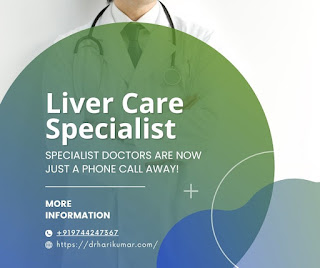Understanding the Different Types of Peptic Ulcers: Gastric vs. Duodenal
Peptic ulcers are a common gastrointestinal condition that affects millions of people worldwide. These ulcers are open sores that develop on the inner lining of the stomach or the upper portion of the small intestine. While many people refer to them simply as "stomach ulcers," it's important to understand that there are different types of peptic ulcers, each with unique characteristics and implications for treatment. The two primary types are gastric ulcers and duodenal ulcers.
In this comprehensive guide, we'll delve into the differences between gastric and duodenal ulcers, their symptoms, causes, diagnosis, and treatment options. If you're experiencing persistent abdominal discomfort, it's essential to consult a gastroenterologist for a proper diagnosis and effective treatment plan.
What Are Peptic Ulcers?
Peptic ulcers are sores that develop due to the erosion of the protective mucous lining of the stomach or duodenum (the first part of the small intestine). This erosion is usually caused by an imbalance between digestive acids and the mucosal defenses of the gastrointestinal tract.
There are two main types of peptic ulcers:
-
Gastric ulcers: Occur in the stomach.
-
Duodenal ulcers: Occur in the duodenum.
Gastric vs. Duodenal Ulcers: Key Differences
| Feature | Gastric Ulcer | Duodenal Ulcer |
|---|---|---|
| Location | Stomach lining | Duodenum (first part of the small intestine) |
| Pain Timing | Worsens shortly after eating | Improves with food, worsens hours after eating |
| Age Group | More common in people over 50 | More common in younger individuals (30–50) |
| Risk of Cancer | Higher association with stomach cancer | Lower risk of malignancy |
| Acid Secretion | Normal or decreased | Increased acid production |
Whether gastric or duodenal, peptic ulcers share several common symptoms. However, the timing and nature of the pain can provide clues as to which type you may have:
General Symptoms:
-
Burning or gnawing pain in the upper abdomen
-
Nausea or vomiting
-
Bloating
-
Loss of appetite
-
Weight loss
-
Dark or black stools (a sign of bleeding)
Specific to Gastric Ulcers:
-
Pain increases shortly after eating
-
More likely to cause nausea and weight loss
Specific to Duodenal Ulcers:
-
Pain relieved by eating but returns 2–3 hours later
-
May cause night-time awakenings due to abdominal pain
If you experience any of these symptoms, especially if they persist or worsen, it’s crucial to consult a gastroenterologist to determine the exact cause and start treatment early.
What Causes Peptic Ulcers?
Peptic ulcers develop when the balance between stomach acid and protective mucus is disturbed. Common causes include:
1. Helicobacter pylori (H. pylori) Infection
This bacterium is the most common cause of peptic ulcers. It damages the mucous coating of the stomach and duodenum, allowing acid to create sores. A gastroenterologist can diagnose and treat H. pylori infections effectively with antibiotics.
2. Non-Steroidal Anti-Inflammatory Drugs (NSAIDs)
Frequent use of NSAIDs like ibuprofen or aspirin can erode the stomach lining, especially in older adults.
3. Excess Stomach Acid
Overproduction of stomach acid due to genetic factors or conditions like Zollinger-Ellison syndrome can also contribute to ulcer formation.
4. Smoking and Alcohol
Both smoking and heavy alcohol use can weaken the stomach lining and increase acid production.
5. Stress and Diet
While not direct causes, chronic stress and poor diet can exacerbate symptoms or hinder healing.
How Are Peptic Ulcers Diagnosed?
If a gastroenterologist suspects a peptic ulcer, they may use the following diagnostic tools:
1. Endoscopy
A thin tube with a camera is inserted through the mouth to view the stomach and duodenum. This is the most accurate test to diagnose and locate ulcers.
2. H. pylori Testing
Breath, blood, stool, or tissue biopsy tests can detect the presence of H. pylori bacteria.
3. Barium Swallow X-ray
In some cases, patients drink a barium solution before an X-ray to help visualize ulcers.
Treatment Options for Peptic Ulcers
Treatment depends on the type of ulcer and its cause. The primary goals are to relieve pain, heal the ulcer, and prevent recurrence.
1. Antibiotics
If H. pylori is the cause, a gastroenterologist will prescribe a combination of antibiotics to eliminate the bacteria.
2. Proton Pump Inhibitors (PPIs)
These drugs reduce stomach acid production and help ulcers heal faster. Common examples include omeprazole and pantoprazole.
3. H2-Receptor Antagonists
Medications like ranitidine reduce acid production and are used in milder cases.
4. Antacids and Mucosal Protectants
Antacids neutralize stomach acid, while protectants like sucralfate coat the ulcer site.
5. Lifestyle Modifications
-
Avoid NSAIDs
-
Quit smoking
-
Limit alcohol
-
Eat small, frequent meals
When to See a Gastroenterologist
Peptic ulcers can lead to serious complications if left untreated, such as internal bleeding, perforation, or gastric obstruction. See a gastroenterologist if you have:
-
Persistent abdominal pain
-
Vomiting blood
-
Black or tarry stools
-
Unexplained weight loss
-
Difficulty swallowing
A gastroenterologist specializes in diagnosing and treating disorders of the digestive system and can provide tailored treatment based on the type and severity of the ulcer.
Preventing Peptic Ulcers
While not all ulcers can be prevented, you can reduce your risk by following these tips:
-
Wash hands frequently to prevent H. pylori infection
-
Avoid overuse of NSAIDs
-
Limit spicy and acidic foods if they trigger symptoms
-
Manage stress through relaxation techniques
-
Get regular checkups if you have a history of ulcers
Final Thoughts
Understanding the differences between gastric and duodenal ulcers is essential for effective treatment and long-term health. While both fall under the category of peptic ulcers, their symptoms, causes, and treatment strategies can differ significantly.
If you suspect you may have an ulcer, don’t ignore the symptoms. Early diagnosis and treatment by a qualified gastroenterologist can prevent complications and improve your quality of life. With the right care and lifestyle adjustments, most peptic ulcers heal completely, allowing you to live pain-free.




Comments
Post a Comment